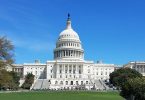Last week the Bank for International Settlements (BIS) published a report about “wholesale digital tokens”. These tokens or digital currencies could be backed by central bank money, commercial bank money or other safe assets. The BIS loosely defines wholesale tokens as digital assets used for large-value payments between financial institutions.
The paper provides almost 50 questions to assess a token. The authors say the queries are for token developers, perhaps for when they submit applications to authorities. But additionally, it could become a risk assessment checklist for potential token holders.
The report notes that in many cases, digital currencies are proposed for the settlement leg of transactions involving other digital assets. For example, a security transaction could use a token for immediate payment in a Delivery versus Payment transaction. Banks often cite benefits such as efficiency and the ability to cut out intermediaries in the form of central counterparties. But the BIS, or its Committee on Payments and Market Infrastructures, emphasizes the need also to be safe.
Addressing efficiencies first, the paper concludes that many benefits could be achieved without the use of tokens. For example, reduced settlement cycles, 24/7 faster payments, harmonized messaging standards, and more in-depth information in payment messages for transparency don’t necessarily require tokens.
Turning to safety, the report emphasized the potential for a mismatch between a token and the underlying asset or funds which back the token. For example, do the underlying assets have the same availability and hours of operation as a token?
Because current legislation was drafted with real-time gross settlement systems in mind as opposed to tokenized systems, there are numerous legal issues. And a token arrangement needs to have appropriate governance, a clear definition of where responsibilities lie, and details about the token holders’ claims and rights.
The authors also point out there is the potential for a wholesale token platform to become a systemically important financial market infrastructure, with all the baggage that brings.
Other challenges relate to liquidity and operational risks, including how scalable the token platform is and its ability to withstand cyber threats. Additionally, how transparent is the platform for different stakeholders, including both tokenholders and authorities such as central banks?
Token design
In terms of token design, the paper kicks off with questions about availability, issuance and redemption process and access. On this latter point, it specifically asked about the potential for a tiered arrangement with direct and indirect token holders.
Perhaps the most important token design consideration is the underlying assets that back the token and the legal rights involved. There are at least a three considerations relating to the issuer, the token holder and the underlying assets or whoever manages those.
The BIS points out that even if the token is backed by central bank money (for example, the Utility Settlement Coin which was not mentioned in the paper), there is still some credit and liquidity risk. This is because the claim is not on the central bank itself but the central bank account holder.
An important question is on what is the token holder’s claim? Is it on the assets or an entity looking after the assets? Is the claim secured or unsecured? And is the claim specific or a joint claim with other tokenholders over a pool of assets?
Other design points include the transfer mechanism, privacy and regulatory compliance, and interoperability between separate distributed ledger technology (DLT) applications or with current financial market infrastructures.
Apart from the questions addressing token design and risk assessment, the BIS also highlights that wholesale tokens could impact central bank operations. These include the smooth operation of payments, monetary policy and financial stability. And consequently “developers of wholesale digital token arrangements should expect that they may need to address the central bank’s policy concerns.”






